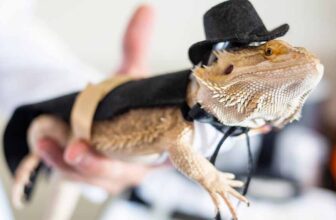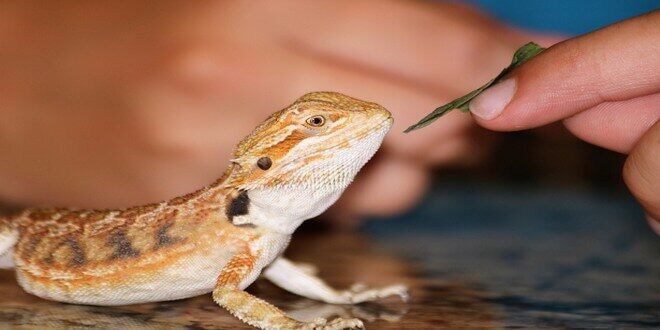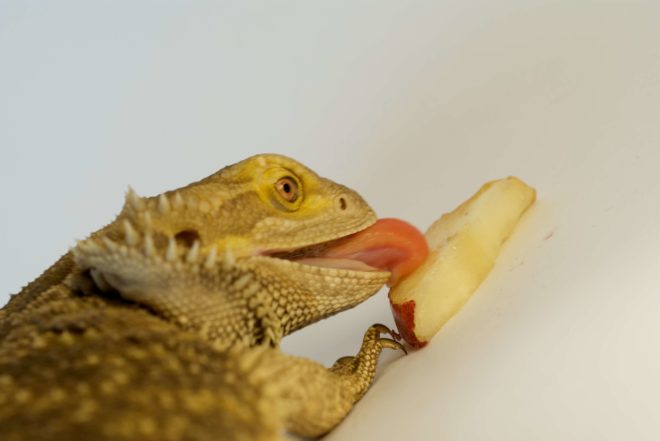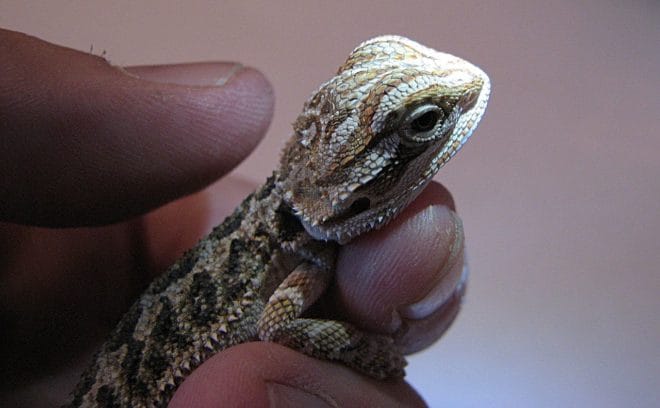Are you planning to get a bearded dragon in your home as a pet? Here are some interesting facts that you should know about it. This will make it more interesting than ever to care for them in the best possible way.
Before you continue reading, I got something special for you:
Vetster: Book your next online vet appointment today! Connect with licensed veterinarians through on-demand video chat appointments and receive expert advice from the comfort of your own home. Keep your furry friends healthy and happy with this convenient and innovative service.
Top 10 facts about the bearded dragon
1. Reason for the bearded dragon unique name
The bearded dragon is a reptile that has spiny projections beneath their necks. This resembles the male beard, as a result of which, these reptiles were named bearded dragons. When they feel threatened or distressed, they can puff these beards out and open their mouths wide, so that they appear to be bigger than usual. They are known by the scientific name of Pogona.
2. Bearded dragon Origin
The bearded dragons were originally found in the deserts of Australia, mostly in the Southeastern and northern parts of Australia. The sub-tropical woodlands and the remote deserts are places that are loved by these unique-looking reptiles.
It was only during the late 1990s they were brought to the United States of America and introduced as a wonderful pet. Within a very short span of time, the bearded dragons have become very popular and loved pets by animal lovers, thanks to their cute looks and warm nature.
3. Bearded dragon Physical appearance
The male bearded dragon can grow up to 60cm long, whereas a female can grow up to a maximum of 51cm. Therefore, when you consider keeping these reptiles as pets, you should be aware that you have to deal with reasonably long friends.
Like most of the reptiles in their family, these dragons, too, have triangle-shaped heads with flat bodies. You will notice scales arranged in different patterns all through the body of these reptiles. An interesting feature of this species is its ability to change its colour based on the climatic conditions. To absorb the external heat, the body of the bearded dragon automatically changes into black.
If you are looking for a baby bearded dragon for a pet, you will get the ones that are above 4 weeks old. If the baby is looking active with clear eyes and nose regions, you can be assured that it is a healthy pet.
4. Bearded dragon Diet
Though the bearded dragons love to feed on leaves and plants, they also love to eat small rodents, lizards and insects. These omnivorous reptiles are non-fussy eaters. During the brumation period (hibernation phase), these pets can stay without food for a long time. However, they do drink water occasionally when they are in hibernation.
5. How the beard behaves
The beard of these dragons not only helps in giving a distinct visual appeal to these reptiles but also plays a big role in their behavior. Though both the genders sport the beard, it is the male that uses it more as a symbol of aggression and to show that it is distressed or threatened.
The beard also plays an important role during the mating process. During mating or at times of stress, the beard darkens, and the reptiles exhibit a behavior known as head-bobbing, during which they no their heads quite fast. The male bearded dragon loves to use its beard and physical attributes to impress his female partner.
6. Impressive reproduction process
Unlike most other pets, the mating process of the bearded dragons is quite interesting, because of the over-zealous nature of the male. The male dragon tries all techniques possible (including inflating its beard, bobbing its head and strongly stamping its feet in front of the female) to attract the female’s attention.
The male then gets himself into the copulation position by biting on the female’s neck to stat off the breeding process. Though it is the male that initiates the mating process, the female responds beautifully by storing the sperm in her ovary all through the breeding process. Thanks to this, she lays a group of at least 11 eggs in two batches, at the end of just one mating session.
7. Unique tail feature
You might have already known as lizards and other reptiles have the capacity to grow back their tails once they get damaged or cut off. However, you will not notice this in bearded dragons. Once these dragons lose their tail, they will remain like that all through their lifetime that lasts anywhere between 4 and 10 years.
Also, they cannot detach their tails by themselves, like most of the members of the lizard family, when they are looking for an escape plan from becoming prey to predators such s big lizards and birds.
8. Caring for the breaded dragon
Ensure that you have at least a 490-gallon glass terrarium for your bearded friend to stay comfortably. You could choose a substrate of sand or reptile carpet, to mimic the natural desert habitat of these dragons. While the humidity should be around 20 to 30%, the temperature settings should be close to 110 degrees F during the day and 85 degrees F during the night.
While insects such as crickets and wax worms can be fed these dragons twice a week, fruits such as bananas and melons should be given as treats only once a week. You have to change the water in the terrarium every single day, to provide a clean and hygienic environment for your pets.
9. Different types of bearded dragons
Though there are many bearded dragons that belong to the Pogona family, currently only 8 types of species are considered legal. They are:
- Black-soiled Bearded Dragon, also known as Dwarf Bearded Dragon, found in 1985
- Western Bearded Dragon, found in 1933
- Northwestern Bearded Dragon, found in 1975
- Eastern bearded dragon, discovered in 1829
- Kimberley bearded dragon, found in 1952
- Nullarbor bearded dragon, found in 1976
- Second variety of Western Bearded Dragon found in 1919
- Central bearded dragon, found in 1926
10. Diseases that bearded dragons are prone to
When you decide to keep a bearded dragon as a pet, you should be aware of the common diseases that it is inflicted with, so that you can be precautious about the same. Here are some ailments that you should expect:
- Growth of organs on the outside of the body
- Presence of the male and female reproductive organs in one dragon
- Born with very small or no eyes at all
- Swollen body of the female along with the eggs inside her
- Born with two heads but one body only
- Abnormalities or deformities in the spinal area
If you are a video lover, then we suggest to you to watch this video of The ULTIMATE Baby Bearded dragon Care before and after adoption.
Conclusion:
Finally, if you are really in love with bearded dragons and you are about to bring one or more home, then you may need to know more about this pet. you can check this The Bearded Dragon Guide, and the Bearded DragonSecret Manual.
Frequently Asked Questions:
Can bearded dragons eat maggots
Bearded dragons can eat maggots, but they should be given in moderation as a treat and not as a staple food. Maggots can provide a good source of protein, but they may also carry harmful bacteria or parasites, so it’s important to ensure that they are from a safe source.
Can bearded dragons eat nectarines?
Bearded dragons can eat nectarines, but they should be given in moderation and as an occasional treat, as they are high in sugar. Nectarines are a good source of vitamins and minerals, including vitamin C and potassium, but they should not make up a significant part of a bearded dragon’s diet.
Can bearded dragons eat papaya?
Bearded dragons can eat papaya, and it can provide a good source of vitamins and minerals, such as vitamin C and potassium. However, like all fruits, papaya should be given in moderation as part of a balanced diet, and it should not make up a significant portion of a bearded dragon’s food.








